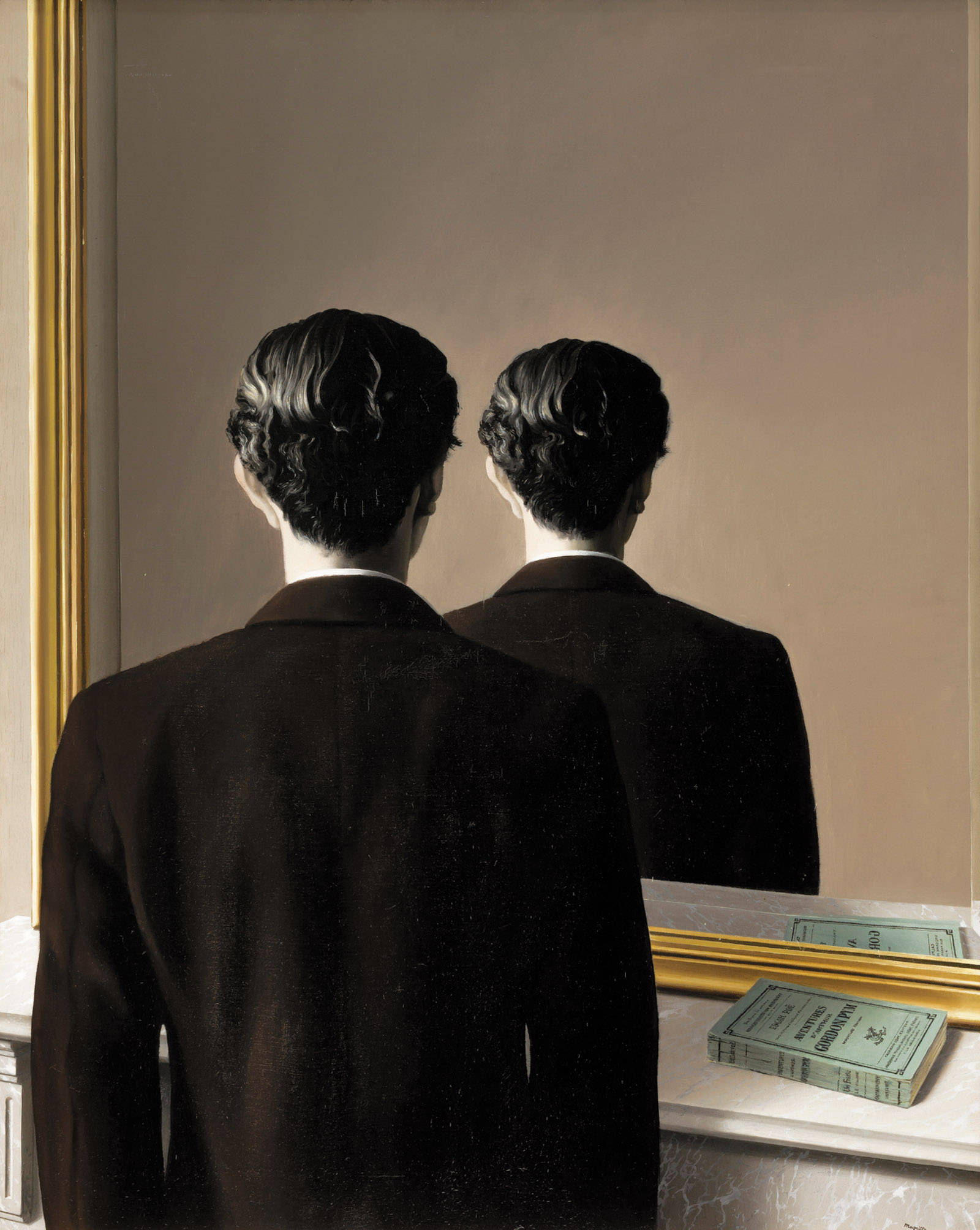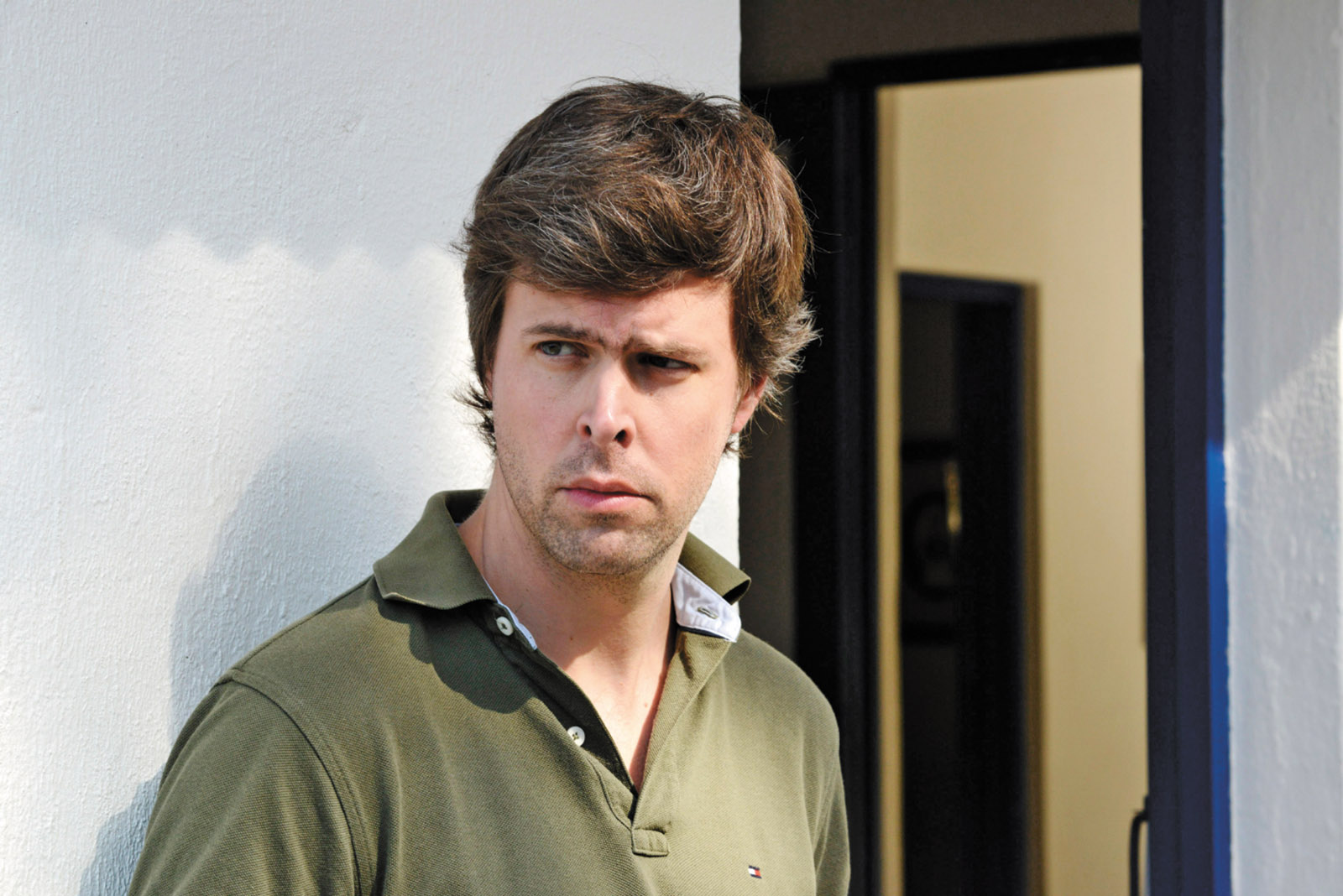The noun in the title of David Szalay’s fourth book of fiction means something quite specific. All That Man Is: not humankind, or mankind, or people; still less women or children. No, he means men, Y-chromosomed adults, and yet the rhetorical sweep of that phrase does gesture toward some large summation. Man, as in Shakespeare’s seven ages—the lover, the soldier, and the decrepit as well. Szalay has a similar inclination to generalize, and his “man” takes the form of a set of typical specimens, though in practice they are all of a very particular kind. Szalay has said that his working title was Europa,* and while the men in his novels have different national origins each is a European in the twenty-first century, as if Szalay were offering a taxonomy of gender and geography alike.
A Canadian by birth, Szalay was educated in Britain, now lives in Budapest, and has published three widely praised earlier books, beginning in 2009 with London and the South-East. They earned him a small handful of awards and distinctions, but this one, a finalist for last year’s Man Booker Prize, seems an achievement on a different level, and any consideration of it has to begin with the collective noun “man.” It needs explaining, and so does the work’s refreshingly cunning form; perhaps indeed they are one and the same. The book is composed of nine sections, each of which concentrates on a different man of a different age. There’s more stitching here than a casual reading might detect, but no character developed in one section appears directly in another; and I will call them “sections” or “parts” rather than “chapters” or “stories.” Novels have chapters and stories are gathered into collections, but All That Man Is looks to hover between the two, and blurring or disturbing that distinction is precisely what this book is about.
The nine parts run in length from thirty to fifty pages. All of them are written in the third person and the present tense, and they’re arranged chronologically. We progress through the year from April to December in 2013, and the main character of each section, after the seventeen-year-old in the first part, is older than his predecessors: twenty-eight in the third part, forty-four in the sixth, and so on. The unwritten months of January through March would presumably belong to boys, the omitted prelude to the lives that follow. Each of the characters has left his home country and crossed one continental border or another. While their primary relationships are with other men and stop short of any true friendships, they are all in trouble with, or maybe just troubled by, the women around them.
So the teenaged Simon in the book’s opening section travels through Central Europe with his school buddy Ferdinand, irritated by the other boy’s social ease and talking, “not for the first time, about the impossibility of achieving any sort of satisfaction as a tourist.” In Berlin the two of them go to Kreuzberg, the alleged “hipster district,” which to Ferdinand proves disappointing; while Simon “finds his friend naïve—though he does not say so—for thinking it would be interesting.” Still, his own naiveté is worse, a masquerade of sophisticated judgment. He complains that Prague is Disneyfied, tries to read The Ambassadors, and longs for his suburban English home, near the girl he worships and yet has never really spoken to.
Most readers will have known someone like Simon, or been one; he’d seem a stereotype if it weren’t for the care with which Szalay brings his ingenuous misery back to us. There’s very little here in the way of a resolution. Ferdinand sleeps with the landlady of their Czech B&B, and at the end the two young men take a train for Vienna; standing in the corridor Simon has “a sense of loss without an obvious object.” Something is over, though it’s not clear what; and something else will now take its place, maybe something better. Though it probably won’t be, not if it resembles the other lives that follow.
Balazs in the third section comes to London from Budapest as the muscle man for a call girl and her pimp. Once a soldier in the Hungarian army, he learned his English in Iraq, reads Harry Potter in Magyar, and believes in the whore’s heart of gold; he loses his job after beating up a client who calls her a “slut.” In another section an English real-estate broker inspects a clutch of newly built apartments in the French Alps. John thinks ironically in the language of his own sales brochures, and realizes in looking over the flats that “expense has been spared.” Yet it has also been spared in his own cramped home, with the wife and children and mortgage that both strangle and sustain him. He still dreams of a big score, another way of being, but “this is his life, these things that are happening,” and he can only hope it’s not as insubstantial as it seems. Again there’s an open ending, and again a sense of dwindling possibility.
Advertisement
Szalay’s prose is often quite beautiful, spare and precise, though it doesn’t at first present the same kind of complexity as the book’s structure. Or at least its words and sentences don’t. But the gaps between those sentences, the punctuation that spaces out his phrases—that’s a different question. He’s a master of white space, and one page in Simon’s section contains but two words, a gasp of almost inarticulate wonder. More common is a pointillist use of one-sentence paragraphs that serve to capture the slow drip of Szalay’s characters’ perceptions. In the fourth part a Dutch-born Oxford medievalist named Karel presses his reluctant Polish girlfriend to have an abortion. He can feel her withdrawing as they walk through a German city, and thinks that
Maybe she had decided—as he had intended, in the madness of yesterday—that she didn’t like him.
He had disappointed her, there was no doubt about that.
Lunch, though, was almost normal.
Or take this paragraph from near the start of another section. The man here is called Kristian, a Danish newspaper editor who drives his children around Copenhagen in order to appear involved in family life. Still,
their school is on his way to work anyway. The Dansk Tennis Klub involves a detour. To drive there takes twenty minutes at least. The traffic is quite heavy at that time in the morning. He talks to them, his daughters, Tine and Vikki, while he drives—about television and pop music and famous people mostly. Tine is eleven. Vikki is eight. They like to talk about television stars. Pop stars. He knows quite a lot about that, even though it is no longer his area of particular expertise, as it once was.
These figures often look at their own lives from a long ways away, and then Szalay’s own perspective magnifies the distance. Chills it too, with his deliberately flat and oddly formal diction, his apparently factual statements that nevertheless capture the way Kristian parses out his self-regard: “To drive there takes twenty minutes at least.” It says nothing that isn’t true but still makes you doubt the character’s every word; the commas in the last sentence stand as self-inflicted wounds.
Different readers of these nine lives will have their favorites, but despite the local variations between them their emotional tenor is much the same. The characters all feel a touch of self-loathing, and with most of them, Szalay suggests, that feeling doesn’t go nearly far enough. Certainly that’s true of Kristian, a figure who suggests not only the book’s strengths and limitations but also its inner structure. He’s the deputy editor of “the top-selling tabloid in Scandinavia,” and has flown to Spain to confront a vacationing government minister with the rumor that he’s having an affair. No state secrets have been breached and the minister is unmarried; still, inquiring minds will want to know. “The story is out there, Edvard,” Kristian says. “It will come out. We want to help you on this.” He hopes that a quick confession will let him “splash” it in the morning. And he gets it, recognizing as he does so both the essential unworthiness of his pursuit and the fact that it gives him the greatest pleasure he knows.
Szalay himself hasn’t worked on a tabloid and has said that he has no particular knowledge of the business. And perhaps his knowingness could be challenged. An earlier book, Spring (2011), told the story of an inconclusive London love affair, but surrounded it with a far more interesting account of a paparazzo’s methods and a description of various race-track dodges. This one appears to know all about the hotel industry and Russian oligarchs in addition to the milieus I have already mentioned, and yet at times I nevertheless wondered how far it could all be trusted. Would a Danish newspaper really be so exactly like something out of Scandinavian noir, minus the murders but with all the sex and secrecy left in? Karel in the fourth part rang false to me; false as a medievalist, anyway, though he was entirely convincing as a blindly selfish young man. So maybe there’s a reason Szalay didn’t finally call this book Europa. All those borders, those national characters and differences—they’re more emblematic than actual. Dutch and Dane, French and English: they all think alike to him, metaphors for a sense of dislocation, for the way in which we are all perpetually out of place, and not only geographically.
Advertisement

Formerly Collection of E. James Museum Boijmans Van Beuningen, Rotterdam/© VG Bild-Kunst, Bonn 2016
René Magritte: La reproduction interdite, 1937; from ‘Dalí, Ernst, Miró, Magritte…,’ a recent exhibition at the Hamburger Kunsthalle and the Museum Boijmans Van Beuningen, Rotterdam. The catalog is published by Hirmer.
Kristian’s section appeared last winter as a free-standing story in The Paris Review, where it was called “Lascia Amor e Siegui Marte!” Leave Venus and follow Mars. It’s a line from Handel’s Orlando that serves as an epigraph to this part of All That Man Is; and in fact the editor does think of his job as a form of combat. The first and the ninth parts are also headed by quotations, one from a folk song and the other from Auden; the book’s logic dictates that Kristian’s is the fifth. There are, moreover, 162 pages before it and 161 after; just as, at thirty-eight, he is himself “Nel mezzo del cammin di nostra vita.” (Not that he would know that phrase of Dante; Szalay uses the medievalist to supply it.) Tarot cards figure in the book’s first, fourth, and seventh sections. I give these details to suggest how rigorously if unobtrusively this book is planned. The start and stop of narrative, the quick cut from one life to another—one notices that, and notices Szalay’s coolly rational prose as well. But its interior architecture seems almost invisible.
Or at least it does until we approach the end. In the seventh part the bitter and penniless Murray, who has failed in one business after another, looks from a Croatian beach at an enormous yacht cruising offshore and is startled by the way the waves seem to “blink around it. Sudden islands of blinding white.” Then he dismisses it with an obscenity. The next section will, however, take us aboard that yacht, the property of a former Soviet trade official who has since become a power in the Russian iron industry. Szalay makes no explicit link between the two men, but once we draw the connection it becomes clear that there’s less difference between them than either would think. The oligarch now faces bankruptcy and plans to kill himself; only “how does one jump from a vessel this size?” And the ninth and final section then returns us to the book’s beginning. In Italy a retired English civil servant gets an e-mail with a poem by his grandson; the young writer, now at Oxford, is called Simon.
Chapters or short stories? Is this hugely enjoyable book a novel, or maybe something else? Story cycles are hardly unknown: think of Sherwood Anderson’s Winesburg, Ohio or Louise Erdrich’s Love Medicine; or, in a different key, Rudyard Kipling’s Stalky and Co. But the joinery tends to be more fully defined, usually through some continuity of character; All That Man Is gives us somebody new each time. Its different parts do, however, all clearly belong to the same suite, and Szalay has said that its origins lie in his own growing ambivalence about the novel as a form, his impatience with working up all the seemingly necessary “masses of incidental detail…[and] elaborate backstories” for his people. His earlier books were heavy with such details, but writing this one in sections made it possible to skip over any elaborate crosshatching: his characters’ lives are lightly sketched, and their relations reduced to the needs of the moment. Yet the book’s thematic consistency also meant that he didn’t need to make each part “carry its own solitary burden of meaning,” as if it were indeed a short story. Split the difference, have it both ways. He does call them stories. He also calls this book a novel, and so it is.
Certainly it looks like one. Collections of short stories inevitably come with a table of contents; this volume quite deliberately doesn’t. Its nine parts are numbered rather than titled, and taken together they provide a novel’s sense of summation: a sequential arc that plots out the possibilities of a man’s life, until we get to the last page and the image of a road “fading away in the dusk.” Those final words both repeat and amplify the dispiriting note with which each separate part ends, and to me that sense of all things dwindling stands as the likely source of Szalay’s creative dilemma; that, and not some loss of faith in the form of the novel itself. Spring, after all, had depended on a relationship that after 270 pages simply fizzled out, and a sequence of short stories may at this point be a better fit for a writer with a Larkinesque predilection for what doesn’t quite happen.
Still, this looks like a one-time venture rather than a concerted attempt to create some new formal possibility, and I suspect that Szalay will soon come back to the novel as such, albeit in some new and different key, one that this book will have made possible. All That Man Is uses its own peculiar shape to define both the variety and the unity of its characters’ collective life. It’s a book to go on with, the kind that makes a career worth watching.
-
*
David Szalay, “Writing All That Man Is,” interview with Lorin Stein, The Paris Review, Summer 2016. ↩




